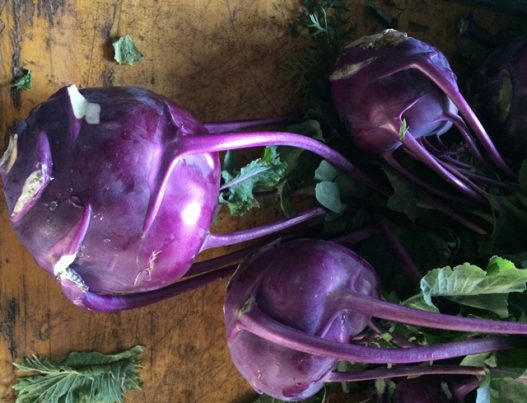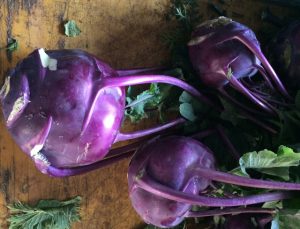
Rutabaga – sources, health benefits, nutrients, uses and constituents at NaturalPedia.com
Wednesday, June 21, 2017 by Frances Bloomfield
http://www.naturalpedia.com/rutabaga-sources-health-benefits-nutrients-uses-and-constituents-at-naturalpedia-com.html

The rutabaga (Brassica napus) is a root vegetable that is a cross between the cabbage and turnip. Known more around the world as “swede”, the name “rutabaga” is commonly used in the western hemisphere, specifically North America. The actual origins of rutabagas are unknown, though many people believe them to be native to Russia and Scandinavia. Rutabagas are considered healthy alternatives to potatoes thanks to their unique nutritional composition.
List of known nutrients
Rutabagas are rich with a diverse range of antioxidants. These are glucosinolates, the sulfur-containing compounds that give cruciferous vegetables their bitter flavor, vitamin C, and carotenoids. Together, they combat free radicals to reduce the risk of healthy cells mutating into cancerous cells. The antioxidants are far from being the only nutrients found in rutabagas, as these vegetables contain:
- Calcium
- Dietary fiber
- Folate
- Iron
- Magnesium
- Manganese
- Phosphorus
- Potassium
- Protein
- Vitamin B1
- Vitamin B3
- Vitamin K
- Zinc
Medicinal uses for rutabaga
Calcium, zinc, magnesium, phosphorus, and manganese are present in rutabagas in varying amounts. These minerals all contribute to the creation and maintenance of bone tissue. Phosphorus, in particular, is crucial to bone health because it assists calcium in building stronger bones and teeth. Rutabagas therefore lessen the chances of developing osteoporosis and other bone disorders. Routine intake of rutabaga may help with more health conditions like:
- Atherosclerosis
- Cancer
- Constipation
- Diabetes
- Gastrointestinal distress
- High blood pressure
Potassium is the most abundant mineral in rutabagas, which means that rutabagas can improve cardiovascular health. The right amount of potassium can lessen blood vessel contraction, lowering blood pressure and allowing blood to pass into vital organs without clotting. When combined with dietary fiber, potassium can also moderate cholesterol levels.
Body systems supported by rutabaga
A cup of rutabagas holds up to three grams of dietary fiber, or 7.89 and 12 percent of the daily recommended fiber intake for men and women respectively. This makes rutabagas an excellent option for sustaining a healthy digestive system, because dietary fiber bulks up stool and regularizes bowel movement. Rutabagas can support other organs and systems, which include but aren’t limited to:
- Bones
- Heart
- Immune system
- Liver
- Skin
- Spleen-pancreas
- Stomach
Ways to use rutabaga
Similar to potatoes, rutabagas can simply be enjoyed in a mash with a bit of milk and cream. The slightly bitter taste turns sweet and savory when cooked. Adding other root vegetables to a rutabaga mash will enhance the flavors of the mash.
Rutabagas are delicious in vegetable pancakes, as a hash, or the side to a savory meal like short ribs and pork chops. Other recipes have called for rutabagas to be used as casserole or mincemeat fillers.
Where to learn more
- Ruta-what? The Root Vegetable You Should Be Eating
- Why Cruciferous Veggies Are The Best
- 5 Alkaline Foods to Eat Every Day
- 8 Best Superfoods for Fall
- 6 Alkaline Foods You Can Really Sink Your Teeth Into
Summary
Rutabagas improve cardiovascular health.
They can also moderate cholesterol levels.
Apart from repelling free radicals, antioxidants found in rutabagas offer the added effect of slowing down aging by stimulating cell regeneration in tissues and organs.
Rutabagas have average levels of zinc, a crucial mineral in proper enzymatic functions.
The immune system can benefit from rutabagas due to the high amounts of vitamin C, a vitamin that can trigger greater white blood cell production.
Individuals on a vegetarian diet can turn to rutabagas to supply them with proteins. These nutrients, along with amino acids, serve as the building blocks of new cells and are crucial to metabolic function.
Anyone with an allergy to cruciferous vegetables should avoid rutabagas.
Sources include:
OrganicFacts.net
Nutrition.HealthGrove.com
DoveMed.com
TheKitchn.com
Epicurious.com
Tagged Under: Tags: rutabaga






